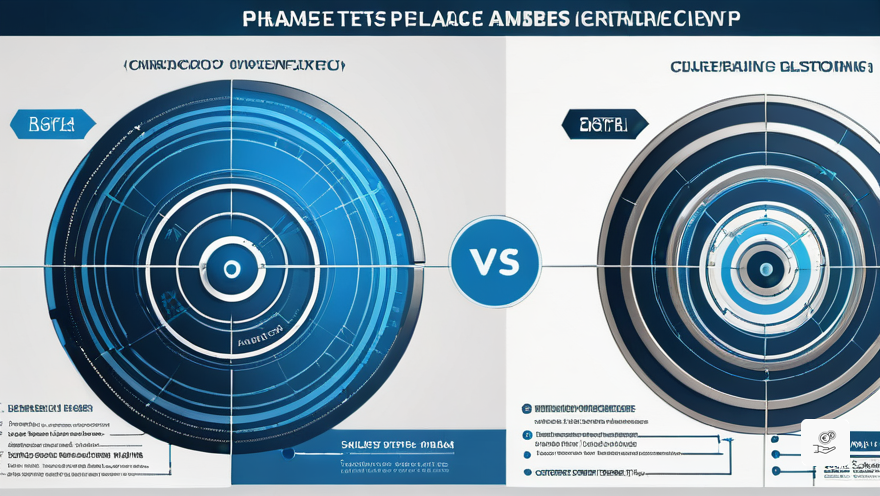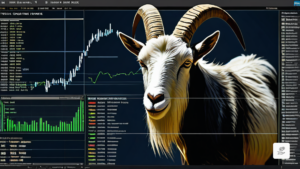Navigating the Maze of Proprietary Trading: Blue Guardian vs. E8 Funding (Extended)

Understanding the Landscape
For aspiring traders seeking a launchpad into the realm of proprietary trading, Blue Guardian and E8 Funding (Extended) emerge as formidable contenders. To navigate this labyrinthine landscape, a thorough comparison of their offerings is paramount.
Trading Objectives: A Comparative Analysis
Exploring UProfit: A Complete Guide to Self-Trading

- Phase 1 profit target: 8% for both companies
- Phase 2 profit target: 4% for Blue Guardian, 5% for E8 funding (expanded)
- Maximum daily loss: 4% for Blue Guardian, 5% for E8 financing (extended)
- Maximum loss: 8% for Blue Guardian, 10-14% for E8 financing (extended)
- Profit split: 85% to Blue Guardian, 80% to E8 financing (extended)
At the heart of every proprietary trading firm lie its trading objectives, which define the parameters within which traders operate. Blue Guardian and E8 Funding (Extended) exhibit distinct approaches in this regard.
Phase 1 Profit Target: Setting the Bar
Both firms establish an 8% profit target for Phase 1, setting a common benchmark for aspiring traders.
Phase 2 Profit Target: Aiming Higher
Blue Guardian adopts a conservative approach with a 4% profit target in Phase 2, while E8 Funding (Extended) pushes the envelope with a more ambitious 5% target.
Maximum Daily Loss: Managing Risk
Blue Guardian prioritizes risk management by limiting daily losses to 4%, providing a tighter safety net compared to E8 Funding’s 5% threshold.
Maximum Loss: Defining Boundaries
Blue Guardian sets a clear 8% maximum loss limit, while E8 Funding offers a scalable approach, starting at 10% and gradually increasing to 14%. This flexibility allows traders to tailor their risk tolerance.
Minimum Trading Days: Flexibility vs. Structure
Blue Guardian embraces flexibility by eliminating minimum trading day requirements, empowering traders to set their own pace. In contrast, E8 Funding (Extended) mandates a 5-day trading period, providing a structured framework for consistent trading.
Maximum Trading Period: Unlimited Potential
Both Blue Guardian and E8 Funding (Extended) offer unlimited trading periods for both phases, granting traders the freedom to pursue their trading goals without temporal constraints.
Profit Split: Sharing the Rewards
Blue Guardian offers a generous 85% profit split, incentivizing traders to maximize their earnings. E8 Funding (Extended) provides an 80% split, balancing profitability with the firm’s operating costs.
Blue Guardian’s Elite Guardian Evaluation Program: A Path to Excellence
Blue Guardian’s Elite Guardian Evaluation Program stands out as a tailored pathway for exceptional traders. This two-phase program encompasses:
Profit Targets: Striking a Balance
The program sets an 8% profit target for Phase 1 and a 4% target for Phase 2, balancing ambition with achievable goals.
Maximum Loss: Preserving Capital
A maximum loss of 10% is enforced, safeguarding traders from excessive drawdowns.
No Minimum Trading Day Requirement: Embracing Flexibility
Traders enjoy the freedom to trade at their own pace, fostering a work-life balance.
Scaling Plan: Empowering Growth
The program includes a scaling plan, enabling traders to gradually increase their account size and trading potential.
Conclusion: Navigating the Path to Success
Exploring UProfit: A Complete Guide to Self-Trading

- Phase 1 profit target: 8% for both companies
- Phase 2 profit target: 4% for Blue Guardian, 5% for E8 funding (expanded)
- Maximum daily loss: 4% for Blue Guardian, 5% for E8 financing (extended)
- Maximum loss: 8% for Blue Guardian, 10-14% for E8 financing (extended)
- Profit split: 85% to Blue Guardian, 80% to E8 financing (extended)
Blue Guardian and E8 Funding (Extended) present distinct paths for traders seeking a launchpad into proprietary trading. Blue Guardian’s accessible approach, featuring lower profit targets and no maximum trading day requirements, offers a more flexible entry point for aspiring traders. E8 Funding (Extended), with its higher profit targets and structured trading environment, caters to experienced traders seeking a more challenging and potentially lucrative experience. Ultimately, the choice between these two formidable firms depends on the individual trader’s risk tolerance, trading style, and long-term aspirations.




